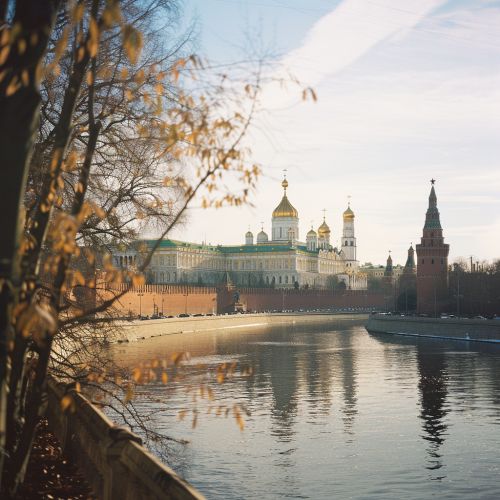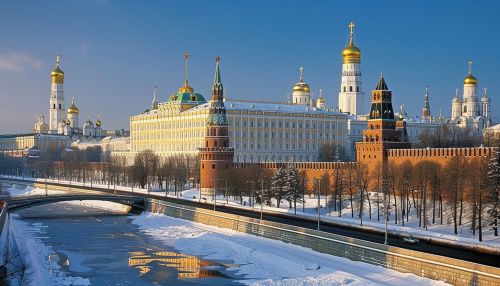Russian politics
Overview
Russian politics is characterized by a complex interplay of historical legacies, institutional structures, and contemporary dynamics. The political landscape in Russia has evolved significantly from the Tsarist autocracy, through the Soviet era, to the present-day Russian Federation. This article delves into the intricate details of Russian political systems, key institutions, political parties, and influential figures, providing a comprehensive understanding of the subject.
Historical Context
Tsarist Autocracy
The roots of Russian politics can be traced back to the Tsarist autocracy, a form of absolute monarchy that dominated Russia until the early 20th century. The Tsar wielded supreme power, with the support of the Orthodox Church and a centralized bureaucracy. The Russian Revolution marked the end of this era, leading to the establishment of the Soviet Union.
Soviet Era
The Soviet Union, established in 1922, was a one-party state governed by the Communist Party of the Soviet Union (CPSU). The political system was characterized by centralized control, with the Politburo and the General Secretary holding significant power. The dissolution of the Soviet Union in 1991 led to the emergence of the Russian Federation.
Political System
Constitution
The current Constitution of the Russian Federation, adopted in 1993, establishes Russia as a federal semi-presidential republic. It delineates the separation of powers among the executive, legislative, and judicial branches.
Executive Branch
The executive branch is headed by the President, who is the head of state, and the Prime Minister, who is the head of government. The President is elected for a six-year term and holds significant powers, including the ability to issue decrees, appoint the Prime Minister, and dissolve the State Duma under certain conditions.


Legislative Branch
The Federal Assembly of Russia is the national legislature, consisting of two chambers: the State Duma (lower house) and the Federation Council (upper house). The State Duma has 450 members elected for five-year terms, while the Federation Council comprises representatives from each federal subject.
Judicial Branch
The judiciary in Russia is independent, with the Constitutional Court, Supreme Court, and lower courts forming its structure. The Constitutional Court has the authority to interpret the Constitution and adjudicate disputes between federal and regional authorities.
Political Parties
United Russia
United Russia is the dominant political party in Russia, holding a majority in the State Duma. It is closely associated with President Vladimir Putin and promotes a platform of stability, economic development, and national sovereignty.
Communist Party of the Russian Federation
The Communist Party of the Russian Federation (CPRF) is the successor to the CPSU and is the second-largest party in the State Duma. It advocates for socialist policies, state control of key industries, and social welfare programs.
Liberal Democratic Party of Russia
The Liberal Democratic Party of Russia (LDPR) is a nationalist party known for its controversial leader, Vladimir Zhirinovsky. It promotes a platform of Russian nationalism, economic protectionism, and a strong centralized state.
A Just Russia
A Just Russia is a social-democratic party that advocates for social justice, economic equality, and democratic reforms. It positions itself as an alternative to both United Russia and the CPRF.
Key Political Figures
Vladimir Putin
Vladimir Putin has been the central figure in Russian politics since the early 2000s, serving as President and Prime Minister. His leadership is characterized by efforts to centralize power, economic reforms, and assertive foreign policy.
Dmitry Medvedev
Dmitry Medvedev served as President from 2008 to 2012 and as Prime Minister from 2012 to 2020. He is known for his modernization initiatives and efforts to combat corruption.
Federal Structure
Russia is a federation comprising 85 federal subjects, including republics, krais, oblasts, cities of federal significance, an autonomous oblast, and autonomous okrugs. Each federal subject has its own constitution or charter and government institutions.
Republics
Republics are federal subjects with a high degree of autonomy, often based on the presence of a specific ethnic group. They have their own constitutions and official languages alongside Russian.
Krais and Oblasts
Krais and oblasts are administrative divisions similar to provinces. They have less autonomy compared to republics and are governed by appointed governors.
Cities of Federal Significance
Moscow and Saint Petersburg are cities of federal significance, meaning they function as separate federal subjects with the same status as krais and oblasts.
Political Culture
Russian political culture is shaped by historical experiences, socio-economic conditions, and cultural factors. It is characterized by a preference for strong leadership, skepticism towards Western-style democracy, and a focus on stability and order.
Authoritarianism
The legacy of authoritarianism in Russian politics is evident in the centralization of power and limited political pluralism. The government exerts significant control over media, civil society, and political opposition.
Nationalism
Nationalism plays a crucial role in Russian politics, with a focus on preserving national sovereignty, cultural heritage, and territorial integrity. This is reflected in domestic policies and foreign relations.
Foreign Policy
Russian foreign policy is driven by the desire to maintain regional influence, protect national interests, and assert its role as a global power. Key areas of focus include relations with former Soviet states, engagement with Western countries, and involvement in international organizations.
Relations with the West
Relations with Western countries, particularly the United States and the European Union, are complex and often contentious. Issues such as NATO expansion, economic sanctions, and human rights concerns contribute to tensions.
Eurasian Integration
Russia promotes Eurasian integration through initiatives like the Eurasian Economic Union (EAEU), aimed at fostering economic cooperation and political alignment among former Soviet states.
Middle East and Asia
Russia's involvement in the Middle East and Asia is driven by strategic interests, including energy security, counterterrorism, and geopolitical influence. Key relationships include those with China, Iran, and Syria.
